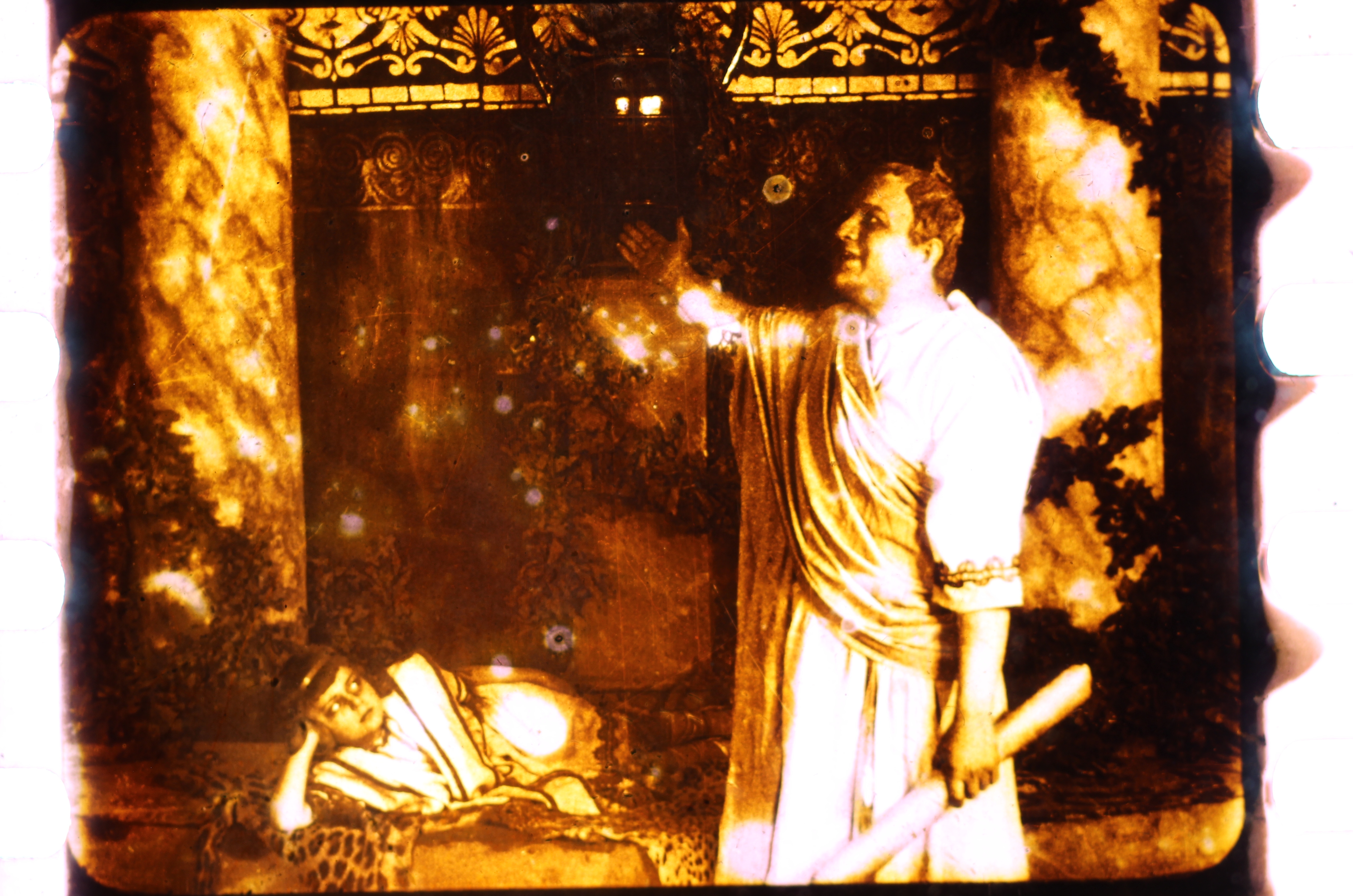"The Death of the Gods" (Smert' bogov), by Vladimir Kas'ianov. A film scenario and two libretti

Published by Anna Kovalova and Arina Permiakova
Introduction translated by Julian Graffy
The materials published here allow us to form an impression of the literary basis of one of the most remarkable Russian pre-Revolutionary films, Vladimir Kas'ianov’s The Death of the Gods (Julian the Apostate), which was a screen version of the novel of the same name by Dmitrii Merezhkovskii. This film is not extant, and until now the main way of making a judgement about it has been by reading reviews or the director’s memoirs. Now our impression of the film can be significantly widened. The scenario, written by the director and held in the Kas'ianov family archive, is being published for the first time. We are also publishing two variants of the libretto: a text published in Kine-zhurnal and a libretto from the programme for the film, also held in the director’s archive.

According to Kas'ianov’s memoirs, the initial intention was to ask Dmitrii Merezhkovskii himself to write the film scenario. The writer refused to do so, but he did agree to act as a consultant once the scenario was ready: “We soon received from him an answer to our second letter, which we had been waiting for in some agitation. In it the author of the trilogy gave an approving assessment of the scenario and expressed his particular satisfaction with the fact that the scenario had managed to retain the “soul” of the work, something that he had not anticipated” (V.P. Kas'ianov, ‘Vblizi kinoiskusstva. Otryvki iz vospominanii. 1896-1917’ (Close to film art. Extracts from memoirs. 1896-1917), published and with an introduction and notes by V.N. Myl´nikova, Kinovedcheskie zapiski, 13, 1992, p. 189).
The film The Death of the Gods (Julian the Apostate) was released in January 1917 and provoked stormy discussion in the press. Vestnik kinematografii (The Cinema Herald) quoted with pleasure a devastating review in Teatral'naia gazeta (The Theatre Gazette): "The essence of the novel, its psychological motivations paled in the scenario and have disappeared without trace on screen, and one can speak about the film only from the angle of its qualities as a costume drama. These latter qualities amount to a chain of insufficiently considered decisions, of traces of obvious negligence, of dependence on chance external factors which could easily have been eliminated, of effects that are cheap both in content and in treatment, of obvious muddle, of limited inventiveness" (‘Julian the Apostate’, Vestnik kinematografii, 1916, No. 123, p. 28).
In practical terms this journal belonged to the film magnate Aleksandr Khanzhonkov, who was happy to strike a blow at a rival in the shape of the Kinotvorchestvo company.

The more objective journal Proektor (Projector) spoke of Kas´ianov’s production differently: “… We have to admit that if Julian is still far from the Chines productions, it at least is worthy of unconditional attention. In general the content of the scenario provides a sufficiently competent account of the basic conception of Merezhkovskii’s novel. In this way the public is given a spectacle that is relatively picturesque from outside and substantial enough from inside to arouse undoubted interest in the picture” (‘Kriticheskoe obozrenie’, Proektor, 1917, 1-2, p. 14).
Making a judgement on the particular features of the production of a film that has not survived is difficult, but Kas'ianov’s scenario suggests that the literary basis of the film was worked through with great care and that the scenario was drawn up with the help of devices that were only just being mastered by Russian film dramaturgy. Thus the six-part structure of the film with which the viewer of the 1910s was already familiar was characterised by a circular composition: Julian’s “visions” in the final tragic scenes lead the reader and the viewer back to the beginning of the film.

The various corrections and manuscript additions to the printed text provide evidence of Kas'ianov’s substantial work as writer of the script. It is clear that Kas'ianov worked most attentively on the intertitles, which are circled in red in the text of the scenario. In this publication the intertitles are in bold while the numbering of the scenes (which in some cases Kas'ianov violated) is reproduced according to the original source. The illustrations are materials from the director’s archive, including stills, sketches for the film and advertising photographs from the shoot (on some of them you can see members of the production group in contemporary clothes who have got into the shot by chance). There is scarcely another pre-Revolutionary film for which such a rich collection of varied materials can be collected.
The publishers of this material are profoundly and sincerely grateful to the director’s great granddaughter, Polina Pavlovna Kas'ianova, for giving us access to unique documents from the family archive and for graciously giving us permission to publish them. We are also sincerely grateful to the film historian Petr Alekseevich Bagrov, who was the first to discover these materials for film scholarship and who shared his discovery with us.
The English translation of the scenario and libretti wil be added over time.

Have you spotted a typo?
Highlight it, click Ctrl+Enter and send us a message. Thank you for your help!
To be used only for spelling or punctuation mistakes.